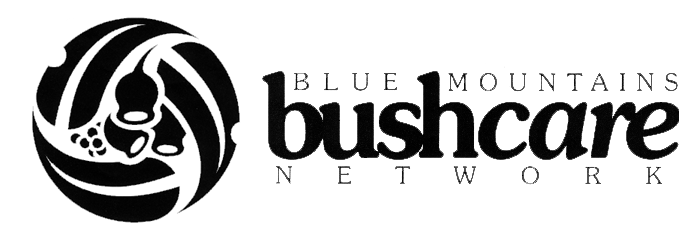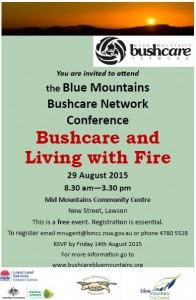Background and General Information on Fire and The Environment
Several people from Blue Mountains organisations attended the NCC Conference in May. Some of the presentations have been selected as particularly interesting; brief descriptions and links are listed below; note that some of the papers are quite large download size.
You might find some of the opinions controversial or confronting!
Nature Conservation Council of NSW 10th Biennial Bushfire Conference 26-27 May 2015, Surry Hills, Sydney
NCC Conference papers and links
General link
http://www.nature.org.au/healthy-ecosystems/bushfire-program/conferences/
Abstracts booklet can be downloaded at
http://www.nature.org.au/media/2216/bushfire-conference-abstracts-program-may2015.pdf
Links specific to a selection of papers
Opening address, Kate Smolski
CEO, Nature Conservation Council NSW
“ … Good fire-management policy and practice could include both effective risk mitigation and positive environmental-management outcomes, and those two things did not have to be mutually exclusive.”
http://www.nature.org.au/media/2247/address-opening-kate-smolski-ncc.pdf
Opening address – Using fire for community and environmental outcomes
Robert Quirk
New South Wales Office of Environment and Heritage, National Parks and Wildlife Service
In the opening address Robert Quirk asserts that NPWS is fundamentally committed to conserving biodiversity through the use of fire in our lands through ecological burning and for the protection of conversation and of natural cultural heritage values including threatened species both on and off Park and Reserve. “ … We’re talking at this gathering about the use of fire for community and environmental outcomes and one of the aspects of this I want to touch on briefly is the change of the Service from fire fighters to fire lighters.”
http://www.nature.org.au/media/2251/address-opening-rob-quirk-oeh-npws.pdf
Setting the scene: climate change and the changing fire risk
Professor Lesley Hughes
Macquarie University, Climate Council of Australia
The paper explores “… the multiple ways in which climate change can affect fire risk. It can affect all four major factors contributing to fire risk – ignitions, fuel load, fuel condition and weather. It can affect ignitions, not in terms of the number of 10-year-olds with a box of matches that go out and light fires, but in terms of lightning strikes. Lightning increases as the weather gets warmer and more humid. Climate can affect fuel load in several ways – if we get a wetter summer, for example, we get more vegetation, if we get a drier summer, we can have less vegetation. Fuel condition, however, is more dependent on the weather in the preceding few months, up and down, The one factor where climate change has a very clear, directional impact, is bushfire weather… As we get more extreme high temperatures, we also get more extreme bushfire weather.”
http://www.nature.org.au/media/2227/1_lesley-hughes-climate-change-and-fire-risk.pdf
When is burning good for the bush?
Naomi Rea
Mulga Data Services
The paper provides possible research areas and considerations that might inform a balanced approach for fire in ecological restoration, looking at both risks and benefits.
http://www.nature.org.au/media/2252/6_naomi-rea-when-is-burning-good-for-bush.pdf
Fuel load, structure and flammability of weeds as key factors in Australian weed classification frameworks
Felipe Aires
University of Sydney
The paper outlines a thesis. The main idea behind thesis “…was that there is already a lot of knowledge about each one of the components forming fire regimes for each type of native fuel types. There are fairly good ways to predict fire behaviour and intensity in native fuels and the empirical models keep being improved.
However, as the fuels shift from native to invasive species the cycle changes and the limited knowledge on fire behaviour of these emergent fuel types may have many practical consequences.”
http://www.nature.org.au/media/2239/15_felipe-aires-fuel-flammability-and-weed-classification.pdf
The State Mine Fire, October 2013 – Patterns of vegetation recovery
Roger Lembit
Gingra Ecological Surveys
Roger Lembit’s study includes Newnes Plateau Shrub Swamp. “… There are other interesting habitats surrounding sandstone formations known as pagodas.”
http://www.nature.org.au/media/2244/22_roger-lembit-state-mine-fire-recovery.pdf
Thanks to Jenny Hill for compiling this list.
 The Bushcare Network had a very busy and productive year in 2017, planning interpretive events and hosting the 3rd Blue Mountains Bushcare Network Conference. You can find minutes of the meetings held throughout the year below.
The Bushcare Network had a very busy and productive year in 2017, planning interpretive events and hosting the 3rd Blue Mountains Bushcare Network Conference. You can find minutes of the meetings held throughout the year below.
